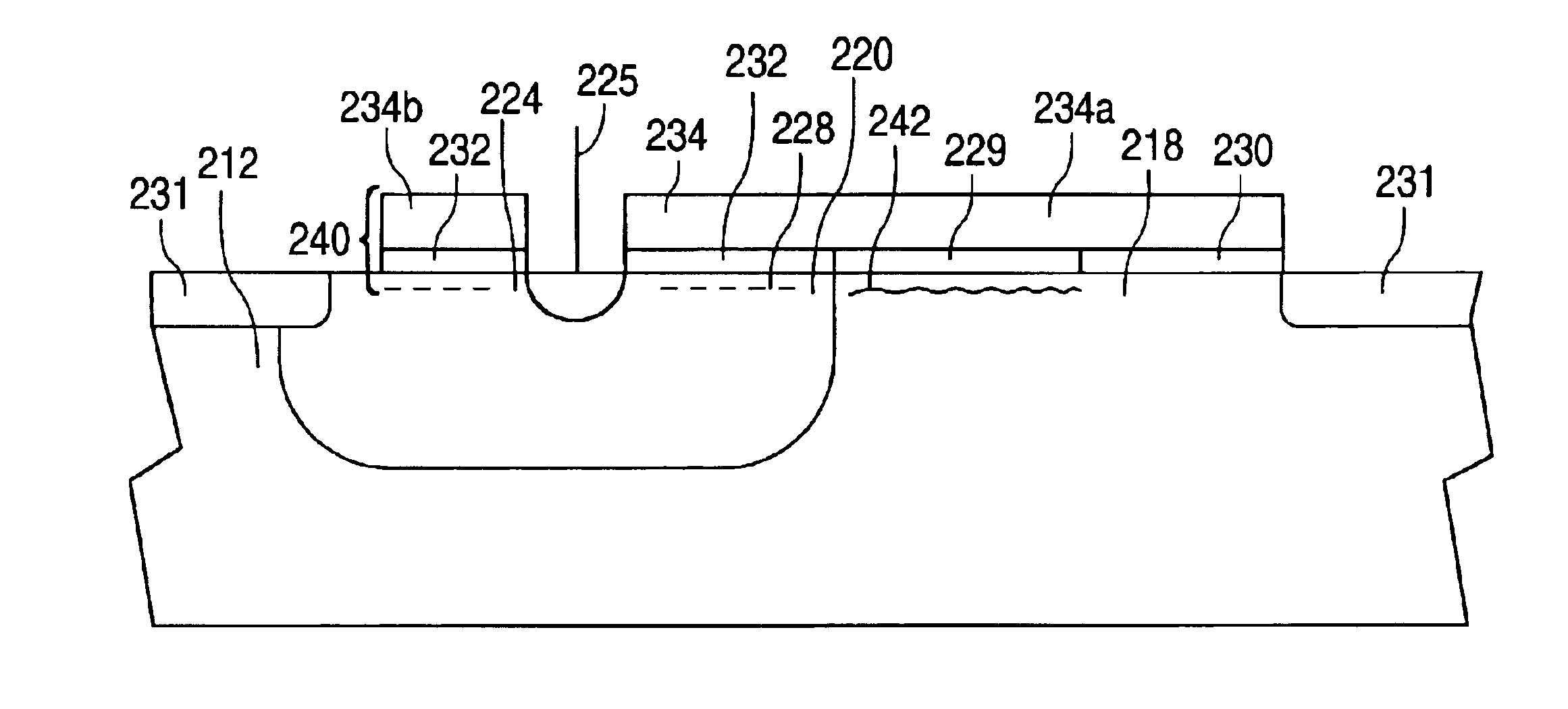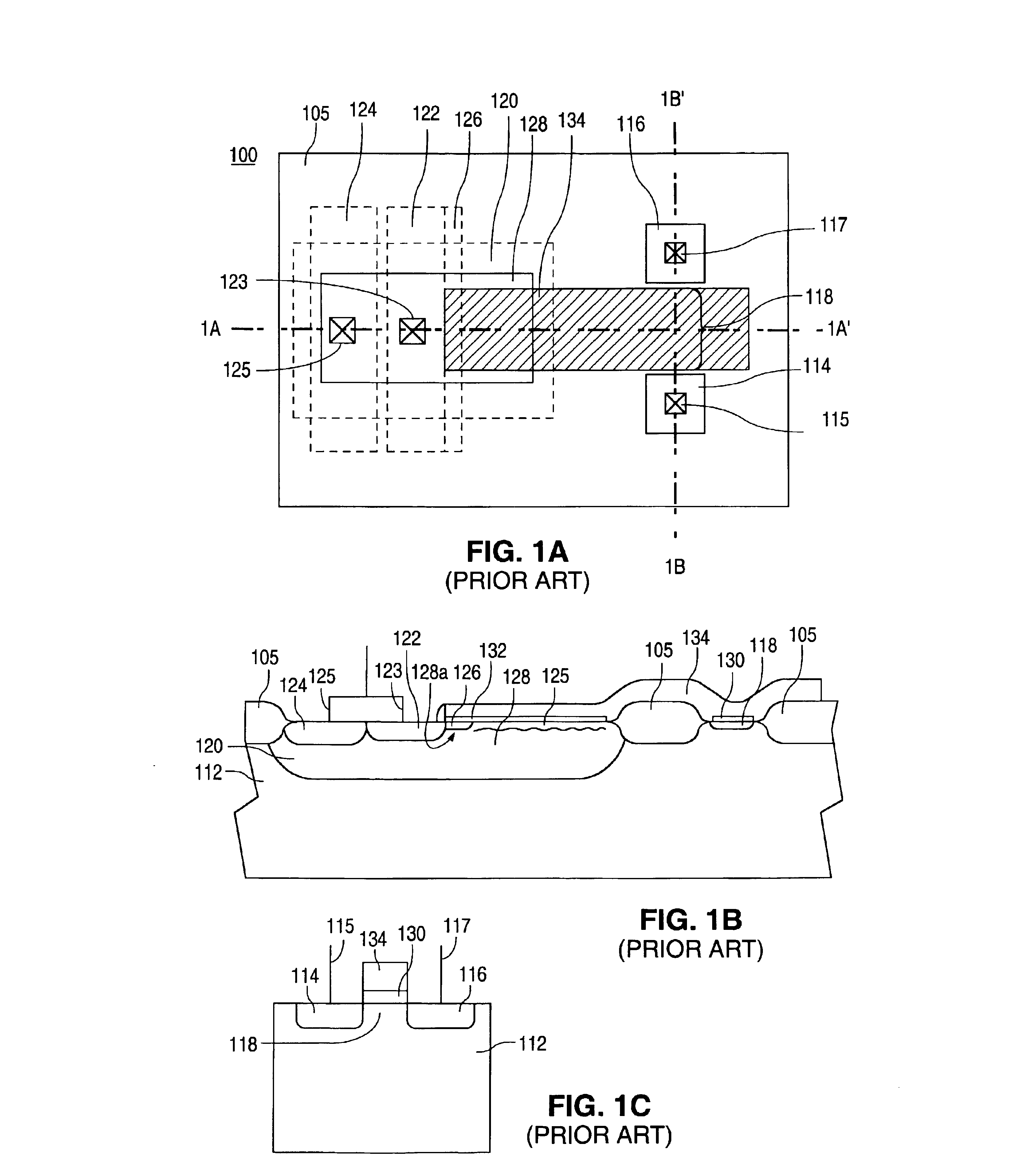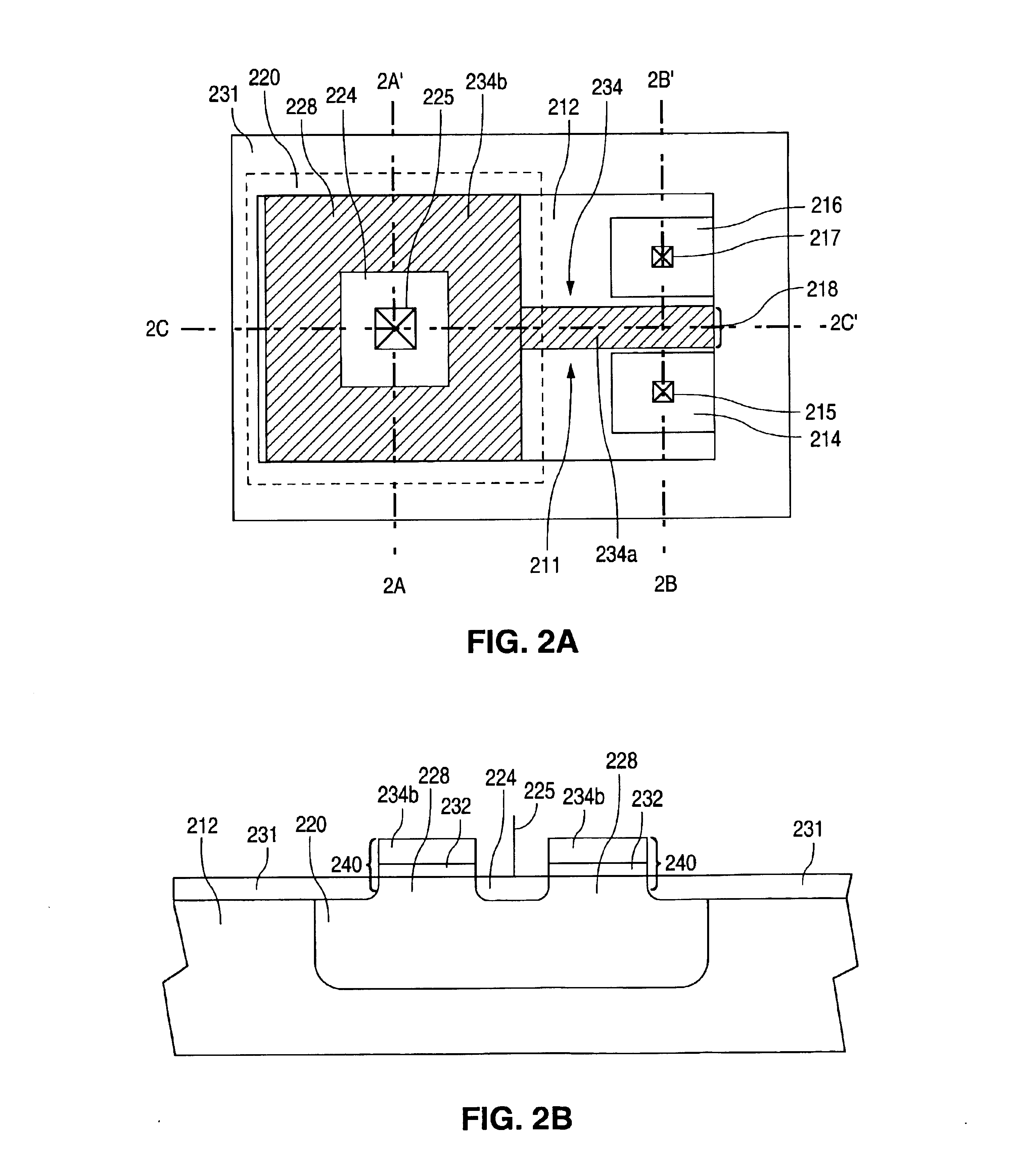Single poly EPROM cell having smaller size and improved data retention compatible with advanced CMOS process
a single-poly eprom and data retention technology, applied in the field of single-poly electricallyprogrammable readonly memory (eprom) cells, can solve the problems of preventing oxide growth, prone cell design to gate oxide leakage, and preventing unwanted leakage through gate oxide of a conventional single-poly eprom cell. , to achieve the effect of prolonging the retention of data and preventing unwanted leakage through gate oxid
- Summary
- Abstract
- Description
- Claims
- Application Information
AI Technical Summary
Problems solved by technology
Method used
Image
Examples
Embodiment Construction
[0047]FIGS. 2A-2D show a series of views that illustrate a single-poly EPROM cell 200 in accordance with a first embodiment of the present invention. FIG. 2A shows a top view of cell 200. FIG. 2B shows a cross-sectional view along line A-A′ of FIG. 2A. FIG. 2C shows a cross-sectional view along line B-B′ of FIG. 2A. FIG. 2D shows a cross-sectional view along line C-C′ of FIG. 2A.
[0048]As shown in FIGS. 2A-2D, EPROM cell 200 is structurally similar to EPROM cell 100 of FIG. 1. Thus, similar reference numerals are utilized to designate structures which are common to both cells.
[0049]As shown in FIGS. 2A-2D, EPROM cell 200 includes spaced-apart source and drain regions 214 and 216 respectively, which are formed in a p-type semiconductor material 212 such as a well or a substrate, and a channel region 218 which is defined between source and drain regions 214 and 216. Source region 214 includes source contact 215. Drain region 216 includes drain contact 217.
[0050]As further shown in FIGS...
PUM
 Login to View More
Login to View More Abstract
Description
Claims
Application Information
 Login to View More
Login to View More - R&D
- Intellectual Property
- Life Sciences
- Materials
- Tech Scout
- Unparalleled Data Quality
- Higher Quality Content
- 60% Fewer Hallucinations
Browse by: Latest US Patents, China's latest patents, Technical Efficacy Thesaurus, Application Domain, Technology Topic, Popular Technical Reports.
© 2025 PatSnap. All rights reserved.Legal|Privacy policy|Modern Slavery Act Transparency Statement|Sitemap|About US| Contact US: help@patsnap.com



